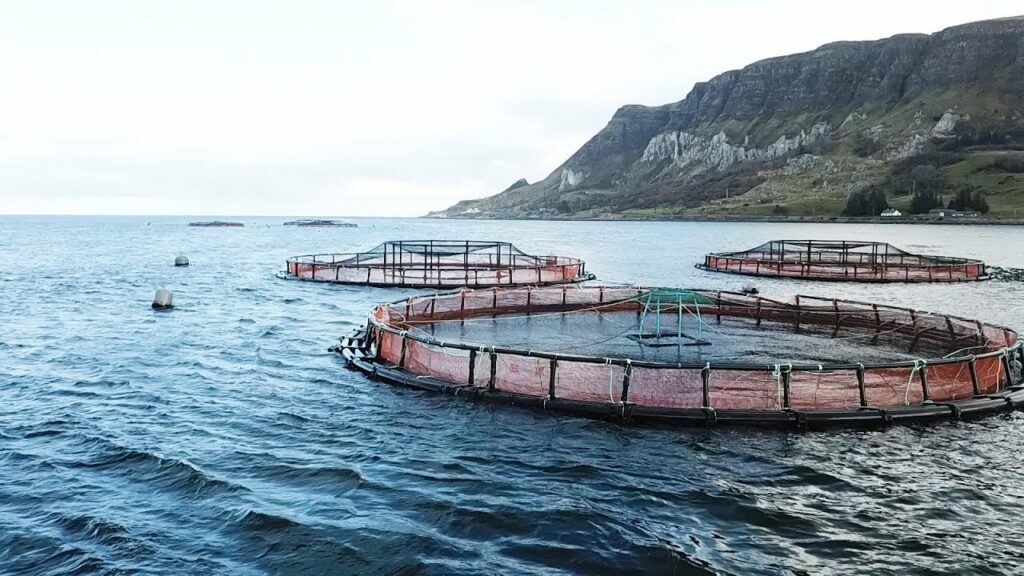Slow progress for organic aquaculture

A revealing new report suggests that organic aquaculture production across Europe has flatlined – with the exception of mussels.
Production is up 60% in five years, which might appear impressive. However, the increase is far from uniform, being heavily weighted in favour of mussel production, and with salmon and most other finfish playing only a minor – and largely decreasing – role.
The report, from EUMOFA, the European Marketing Observatory for Fisheries and Aquaculture, is based on data from national sources, including the UK until the time it left the European Union.
On a broader front, consumption of organic food generally (including seafood) is on the increase across Europe and was worth €44.8bn (£38.4bn) in 2020, rising by 15% the previous year.
Because organic food is generally more expensive, some analysts think rising inflation could slow future growth, although EUMOFA believes the EU’s Farm To Fork strategy should lead to significant increases over the next decade or so.
Currently, the main EU organic aquaculture producing countries are Ireland (salmon and mussels), Italy (mussels and finfish), France (oysters, mussels, and trout), the Netherlands (mussels), Spain (mussels and sturgeon), Germany, Denmark and Bulgaria (mussels).
The total organic aquaculture production at EU-27 level was estimated at 74,032 tonnes in 2020, accounting for 6.4% of the bloc’s overall aquaculture output.
Based on data collected for this study the main species produced are mussels (41,936 tonnes), accounting for more than half of the total organic aquaculture production, followed by salmon (12,870 tonnes), trout (4,590 tonnes), carp (3,562 tonnes), oysters (3,228 tonnes) and European sea bass and gilthead sea bream (2,750 tonnes).

Glenarm organic salmon farm, Northern Ireland
The report says the main developments over the five year period between 2015 and 2020 are a significant increase in organic mussel production, mainly from the Netherlands, Italy, Germany, Ireland, Denmark, France, Spain and Bulgaria.
This output accounted for 41,936 tonnes in 2020 (10% of total EU mussel production), more than double the 2015 total of 18,379 tonnes.
There was also a sharp increase in organic oyster production at EU level, mainly based in France, rising from 900 tonnes in 2018 to 3,220 tonnes in 2020.
But organic salmon seems to be in short supply throughout the EU which, says EUMOFA, is due to a 3,600 tonne reduction from Irish farms down to 12,780 tonnes and, of course, to Brexit.
Scotland was producing a modest 2,400 tonnes a year prior to the Brexit vote in July 2016. This has since risen to more than 13,000 tonnes.
Scottish farms continue to supply organic salmon to Europe, but Brexit means producers are facing ever-increasing export hurdles.
The main beneficiary would appear to be Norway, which although not in the EU, is a member of the EU Single Market, giving it almost unhindered access to 27 salmon-hungry countries.
Norwegian organic salmon output stood at 25,546 tonnes in 2020 compared to just 10,000 tonnes five years earlier.
EUMOFA says these trends can be explained by differences in production methods for shellfish and finfish, with more technical and regulatory constraints for the latter as well as a limited demand for organic finfish.
Stakeholder feedback suggests that operators also face difficulties when establishing a clear communication strategy toward their clients to deal with the competition between organic and other certification schemes.
These are included in a separate report outlining prospects for growth in organic aquaculture in the EU.
Sea bass and sea bream shine
Looking at other organic finfish products, the report says trout has remained more or less stable at around 4,600 tonnes over the five year period under review.
But organic carp farming, mainly carried out in Hungary, Romania and Lithuania, is down by nearly half to 3,560 tonnes.
The one bright spot for organic finfish is sea bass and gilthead sea bream, mostly from Greece, which is up from 2,000 tonnes in 2015 to 2,750 tonnes in 2020.
For shellfish, in most cases there are limited differences between conventional and organic in terms of production methods, says the report: “Thus, shifting to organic is not complex for producers but it increases the administrative burden.
“The main barrier to market growth for the organic shellfish segment is to be found in the somewhat limited market incentives for producers in terms of price premium or demand from customers.
“As for finfish, organic production has not increased because of the limited demand from the market and the technical difficulties in producing under the organic scheme including the availability of organic feed and juveniles.
“In addition, the organic scheme may not be in line with the production methods developed by producers (for instance extensive pond polyculture in some Eastern MS [Member States] or closed recirculating aquaculture systems) or national requirements (for instance, requirements for the largest aquaculture sites in Denmark). “
EUMOFA adds: “Another difficulty stakeholders face when establishing a clear communication strategy toward their clients is the competition with other certification schemes (for instance, the Aquaculture Stewardship Council [ASC] or Marine Stewardship Council [MSC], the latter may also apply to shellfish production in the Netherlands).”
They also note that organic schemes “only cover aquaculture products and not wild caught products (farmed products account for about a quarter of EU seafood production and consumption).“

